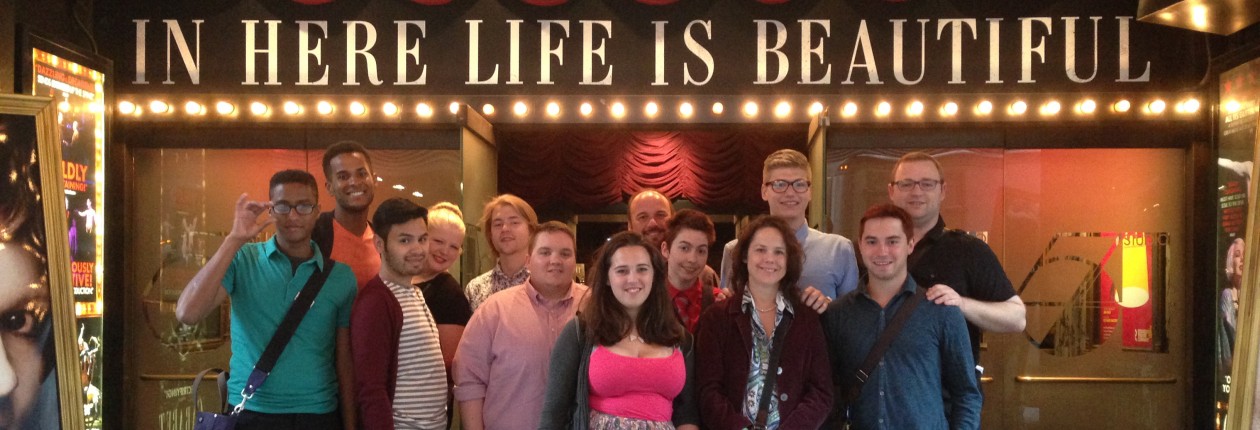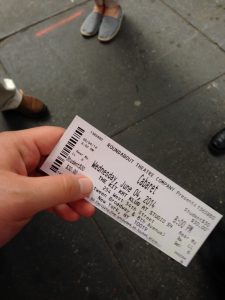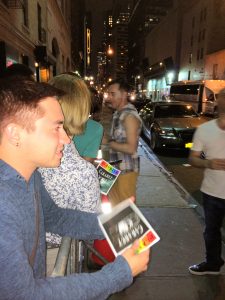Greetings loved ones, followers, and those who may stumble upon this blog unintentionally! My name is Eliot Blackburn and I will be giving you a brief reflection upon my trip experience these past few days. Yesterday morning our day began with a group reflection session where we discussed our thoughts of the previous day (for more details see Gary’s post). A few things stuck out to me that I felt were worth sharing widely. Those are the central role the HIV/AIDs epidemic has had on the LGBTQ community and the prominence or invisibility of women within queer history. While HIV is generally associated with gay men in the United States, the past few days have actually shown us that hemophiliacs and intravenous drug users were/are disproportionately affected by HIV. These two groups were highlighted by ACT UP members Jim Eigo and Annette Guadino and these groups came up again on our trip to the New York Public Library.
Group meeting before heading out for the day
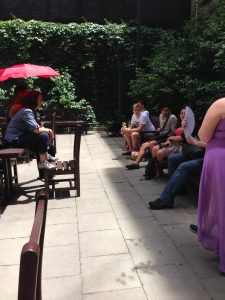
After having the morning to sleep in (thank you Dr. Pitts & Lowell!) the group headed to the New York Public Library’s Schwarzmann Building on 5th Avenue. We had the distinct pleasure of meeting with Jason Baumann, Coordinator of Collection and Assessment and LGBT Collections for the New York Public Library (NYPL). Jason gave us a brief overview of the LGBT collections and records available on request and online across the various NYPL libraries. We learned 4 libraries make up the NYPL (Humanities & Social Sciences, Science Industry and Business, Performing Arts, and the Center for Black Research and Culture). What struck me about the LGBT collection is that while it is mostly a political history of the HIV/AIDs epidemic during the 1980s and 90s, representations of LGBT individuals exist in a multitude of locations throughout the NYPL system. For example, the Humanities and Social Sciences library houses the archives for ACT UP New York while the Performing Arts division has a collection of ethnographic first hand accounts from many early ACT UP members.
During his presentation Jason addressed a number of questions the group posed to him. We discussed the politics surrounding attaining and maintaining an individual or group’s archive as well as the difficulties making the collections available to the public. LGBTQ history has been historically ignored and not recorded for a variety of reasons and Jason pointed out a way to “research around” the records. He encouraged the group to be creative and think out side of institutionally constructed research guides and archive structure. In all honesty this was a bit surprising to hear these suggestions in light of the experience we had at the Lesbian Herstory Archives. The LHA has been and continues to be structured in such a way that challenges conventional archive formations. While Jason was quick to encourage us to be creative and engage with the collection, the Herstory archive was literally hands on. We were able to touch the documents, pick them up, and even photocopy some of them. This was not the case at NYPL. It was extremely insightful to experience a community based archive such as the Lesbian Herstory Archive and the professionalized NYPL. They both have strengths and weaknesses but overall their goal is the same – preserving the lived experiences of LGBTQ individuals.
Grand Central Station, On the way to NYPL
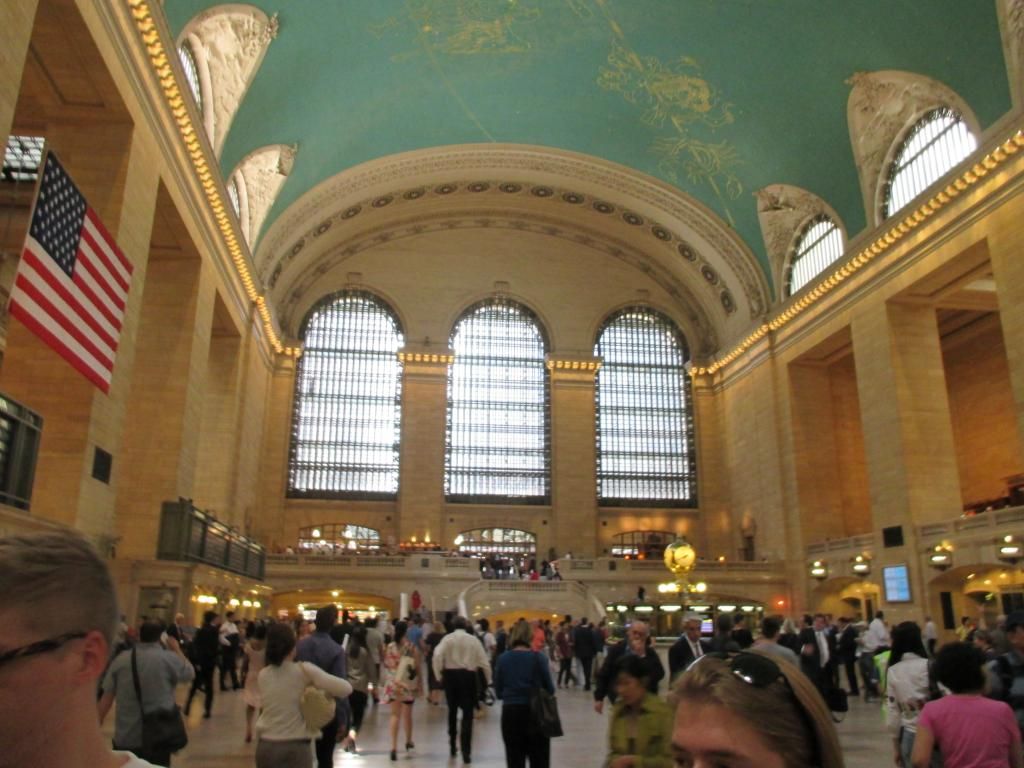
Lowell pointing out important landmarks
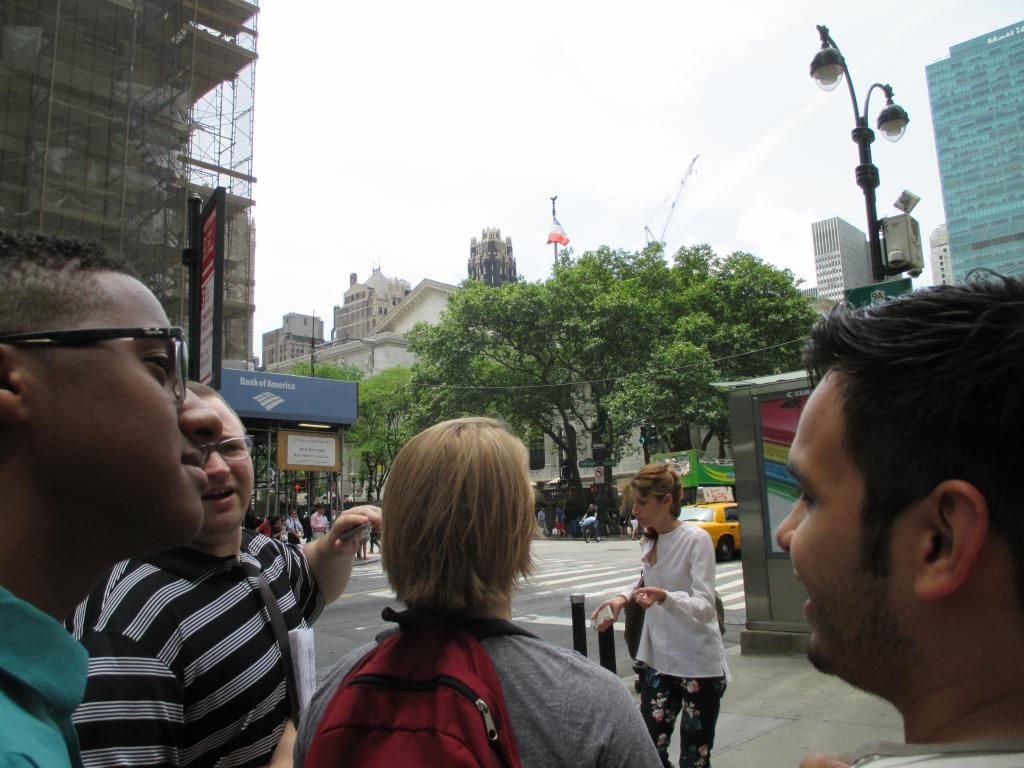
NYPL 5th Avenue location, We’re Here!
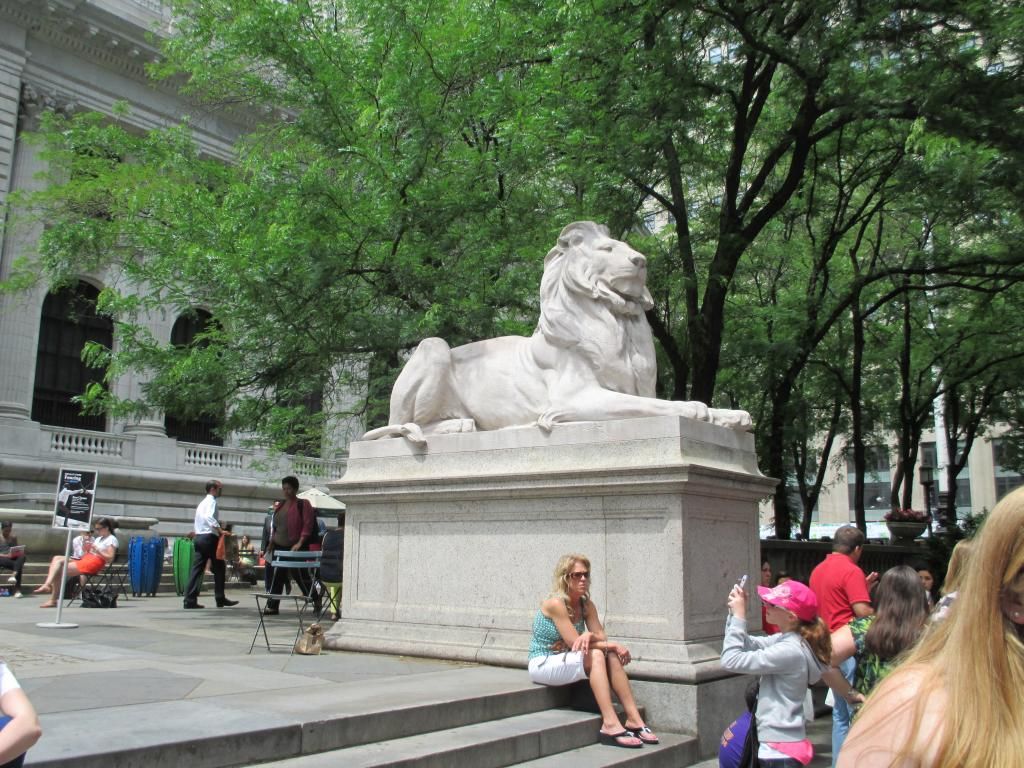
Jason Baumann addressing the group
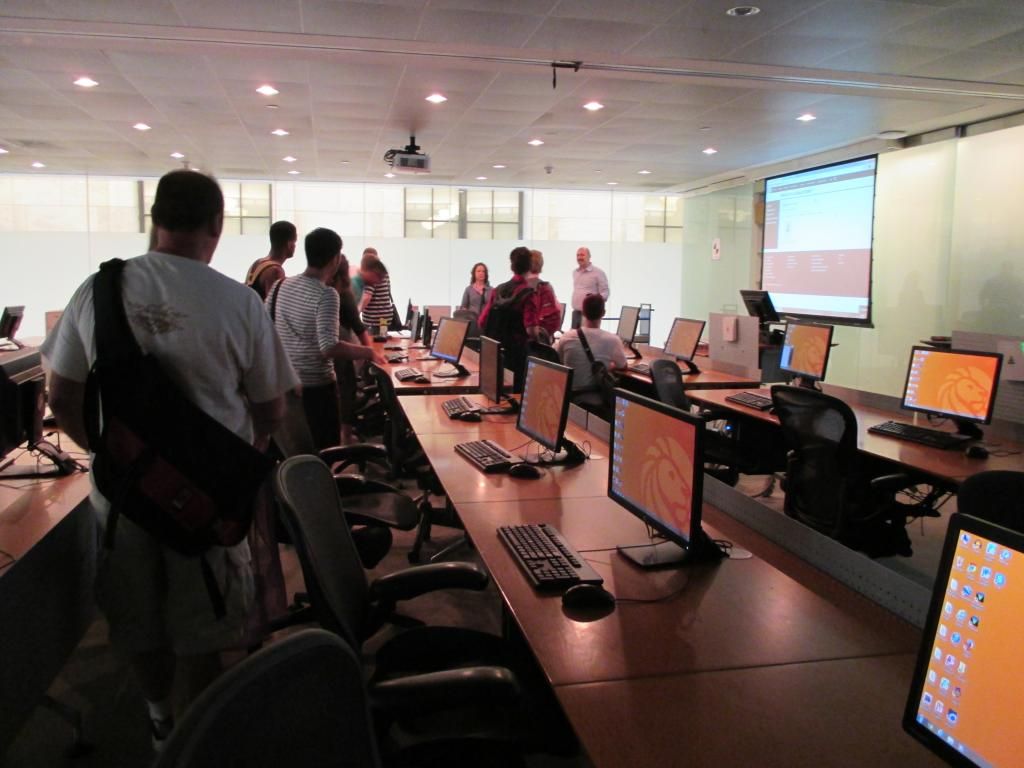
“Women get AIDs too,” NYPL LGBT Collection

Jason gave us a quick tour of the 5th Avenue location and we spotted a Gutenburg Bible!

Now to the second part of our day – Broadway! Our group saw Cabaret at the legendary Studio 54. Before entering the space we were able to take a group photo (below) in our semi-fancy outfits. The production first opened in November of 1966 and has experienced many revivals since in the United States and England. For those of you unfamiliar with Cabaret (like me before seeing the show), the musical is set in Berlin, Germany during the 1930s leading up to World War II. Act I opened with the Emcee (Alan Cumming) welcoming the audience to The Kit Kat Club, a salacious place that one of the main characters, Cliff Bradshaw describes as, “a bunch of teenagers partying in their room waiting for their parents to find out.” Aesthetically the production reminded me of burlesque shows and the sexual freedom and autonomy associated with such spaces. The Kit Kat Club serves as a hub of social interaction for the main characters and becomes a site of regulation during Act II after the Nazi Party comes to power in Germany. The overarching theme of Cabaret tracks the progressive loss of freedom to express sexuality and political ideology. Until the last few scenes of Act I the production seems to be about the sexual relations and social interactions of people living in 1930s Berlin. After a local Nazi party member warns his friend marrying a Jew would not be good for her future, the play begins to lose its playfulness and upbeat nature. Act II sees less sexual escapades, the local “working girl” taking up a steady boyfriend (the local Nazi), and a terminated pregnancy.
So as not to completely ruin the production for those of you who have not seen it, suffice it to say there was a lot going on in Cabaret. In terms of the goals of this Trans-Atlantic Sexualities course, the big take away for me is that persecution and the destruction of a community or society can happen almost instantaneously. When the Emcee of the Kit Kat Club sheds his overcoat to reveal striped gray and white attire with the Star of David and the pink triangle, I was overwhelmed with emotion. I remembered painting the pink triangle on ACT UP banners the day before and wondered what it must have been like for those accused of sexual deviancy to be murdered or sent away to concentration camps. It gave me chills to think that a symbol previous generations and my generation use to symbolize power and community may have been the last thing a person saw before their death.
More than anything today has made me more appreciative of LGBTQ people and communities that existed long before my existence on this earth. I was moved by the letters and posters at the NYPL documenting the lives of women who died of AIDs related complications before the U.S. government even admitted it was possible for women to become HIV positive. In the cab back to NYU a disagreement occurred over some of the “facts” presented in Cabaret. Whether it was completely factual or not is inconsequential. The point of Cabaret, visiting the NYPL, and working with ACT UP New York is that we (LGBTQ people and our Allies) must live authentic lives and advocate for ourselves. If LGBTQ history is allowed to fade away into the space of time we will end up like Cliff Bradshaw and Sally Bowles, dancing away to the end of the world without a clue or care in the world.
In front of Studio 54 – the venue for Cabaret.
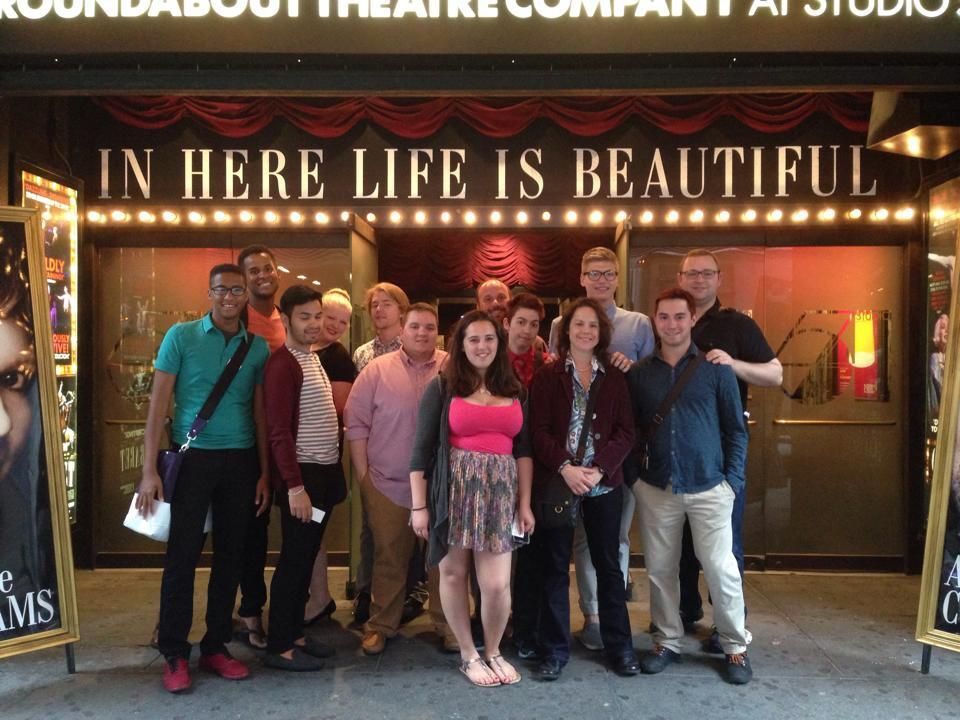
After the show some of the actors met with fans and signed playbills. We were all starstruck and very excited to meet the actors.
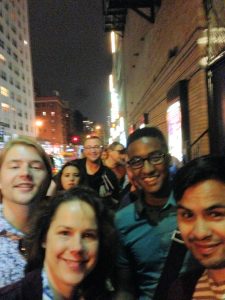
Alan Cumming signing autographs for Purdue students.
